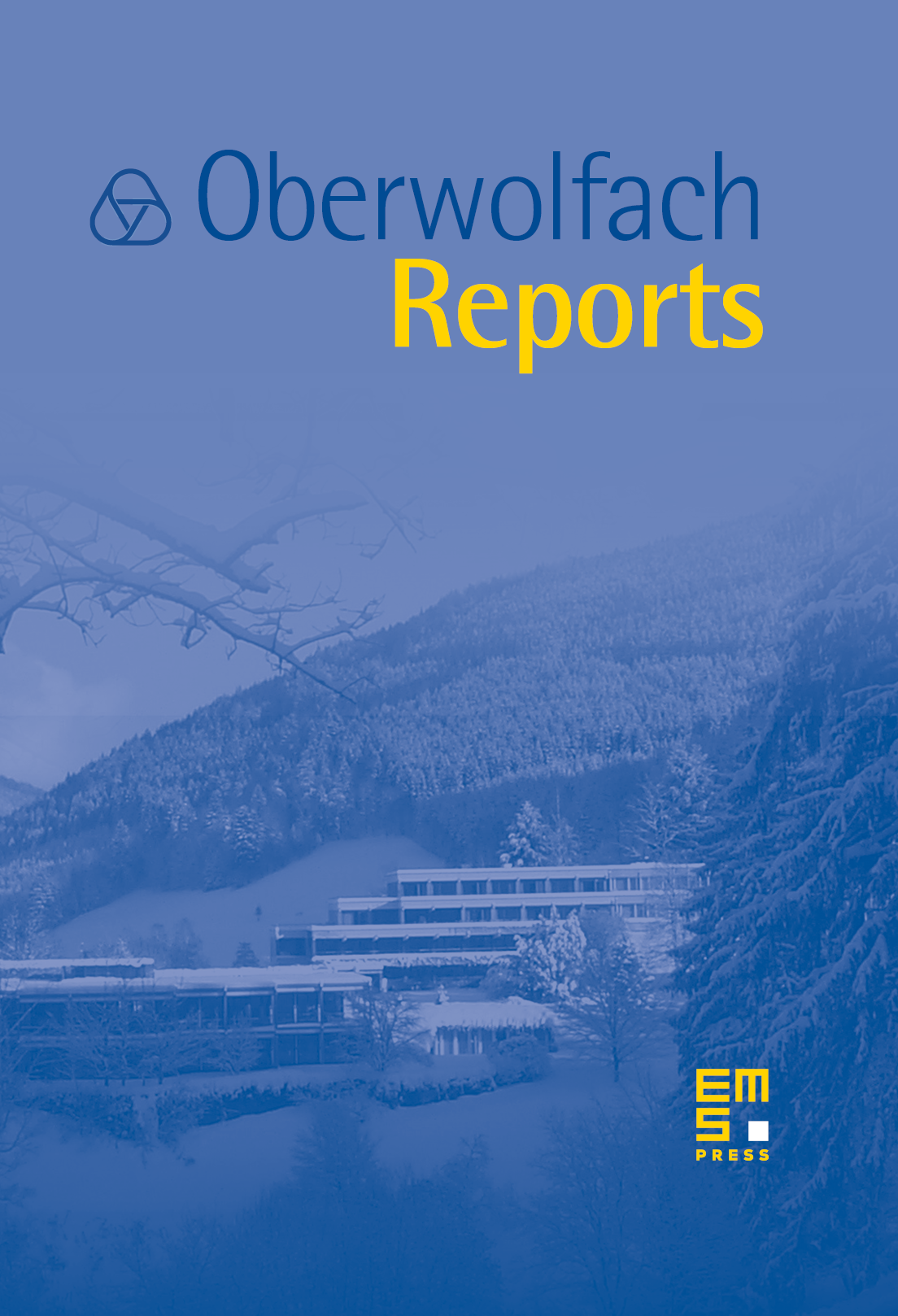Analytic Number Theory
Jörg Brüdern
Universität Göttingen, GermanyHugh L. Montgomery
University of Michigan, Ann Arbor, United StatesRobert C. Vaughan
The Pennsylvania State University, University Park, United States

Abstract
It was an exciting week at the Forschungsinstitut, with reports of important new developments, and intense work on a variety of fronts. The atmosphere was warm and relaxed, almost convivial, and certainly more cooperative than competitive, although the mutual seriousness of purpose was constantly evident.
Of all the new results announced at the meeting, three stand out for special mention:
Jerzy Kaczorowski and Alberto Perelli have shown that there is no member of the Selberg Class with degree in the open interval . The Selberg Class is an attempt to describe, by means of functional equations and Euler products, those functions for which one feels the Riemann Hypothesis should be true. It is presumed that eventually it will turn out that the Selberg Class is synonymous with the set of automorphic -functions, but we are very far from proving this. The degree, which relates to the sum of the arguments of the gamma function factors in the functional equation, is conjectured always to be an integer. The Riemann zeta function has degree , and H.-E. Richert showed that there is no member with degree . More recently it had been shown that there is no member with degree in the interval . This is a central problem, that many people have attacked, so the realization of is a remarkable step forward, albeit a modest advance when compared with the enormous task ahead of us.
The Prouhet–Thue–Morse sequence has been independently discovered three times, in 1851, 1906, and 1921, respectively. Prouhet related the sequence to number theory, Thue applied it to combinatorics on words, and Morse to differential geometry. Let denote the ‘binary weight of ’, which is to say the number of 's in the binary expansion of . Thus , , and . Put if is even, and if is odd. Thus the word is . The power series generating function of can be written in closed form:
Clearly, for all ; thus the integers are very equally divided between those for which is even and those for which is odd. In 1967, Gelfond (famous for work in transcendence) asked whether is (asymptotically) equally even and odd, as ranges over primes , . The Prime Number Theorem concerns the leading binary digits of , and Dirichlet's theorem on primes in arithmetic progression relates to the trailing digits. As concerns , one is dealing simultaneously with all binary digits of . Many researchers have worked on this problem without success, including at least one of the conference organizers. Some years ago a solution was announced in C. R. Paris, but this was followed neither by a proof nor a retraction. Now at last we have a solution: Joël Rivat and Christian Mauduit have cleverly seen how to show that as .
Consider the Pell equation , which relates to the units in the real quadratic number field . If is divisible by a prime , then the equation has no solution. If is a prime number , then does have a solution. The number of for which is composed entirely of primes is ; thus the case of prime is negligible among these discriminants. In a spectacular tour de force, Etienne Fouvry and Jürgen Klüners have shown that the ‘negative Pell equation’ has a solution for a positive proportion of discriminants composed entirely of primes .
The advances described above could not have been anticipated, and are at once surprising and gratifying. And just a few years before, the team of Goldston, Pintz and Yıldırım excited the world with their proof that infinitely often. This brings us a little closer to twin primes. Since is on average, it is reasonable to consider the distribution of . We conjecture that this quantity is asymptotically distributed like an exponential random variable, with density . It would follow that every number in is a limit point of the numbers . In the 1930's it was shown that is a limit point, but it was only with the work of GPY that we could for the first time name a finite real number (namely 0) that is a limit point of this sequence. The GPY technology has been scrutinized, and has matured, but the team had their heads together for long hours during the conference, with the promise of further results.
Other highly active subareas that were represented at the meeting include additive combinatorics and the circle method, rational points on varieties, spectral decompositions for -functions, sieve methods, and others.
The vast array of activity, the overload of talent, the extreme unpredictability of advances all make it challenging to select a fruitful mix of participants. On this occasion we feel that we could not have done better. Several participants, after the evening problem session, said that it was the best such session that they had ever experienced at Oberwolfach – more open, frank, and productive.
This meeting is in the tradition of Oberwolfach meeting organized by Theodor Schneider in the 1960's and 1970's that some us remember. We hope to emulate his vision as best possible in the modern times by taking a broad view and only the most gifted invitees.
Cite this article
Jörg Brüdern, Hugh L. Montgomery, Robert C. Vaughan, Analytic Number Theory. Oberwolfach Rep. 5 (2008), no. 1, pp. 669–746
DOI 10.4171/OWR/2008/14